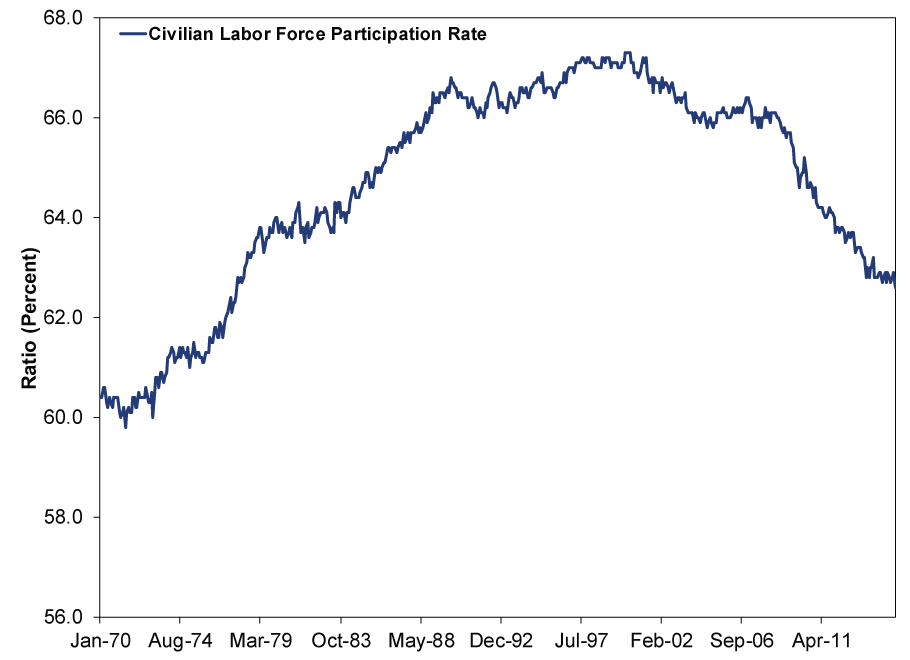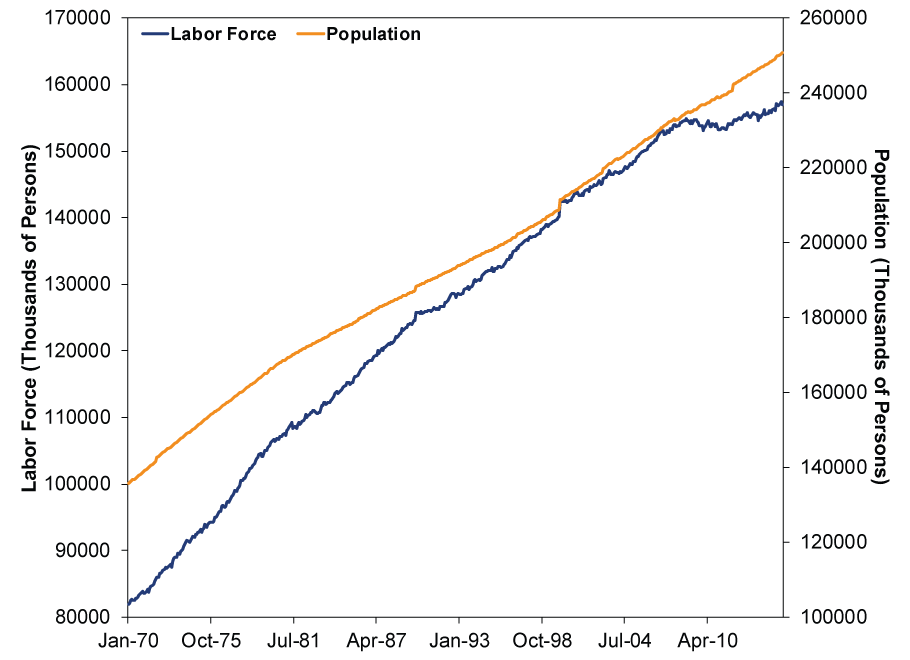Personal Wealth Management / Market Analysis
People Are Not Leaving the Workforce
Don't let the falling labor force participation rate fool you.
US job growth topped 200,000 again in June, knocking the unemployment rate down to 5.3%-lowest since April 2008-but many headlines chose to dwell on a perceived negative: the falling labor force participation rate. Many argue this is a sign folks are still leaving the workforce in droves, indicating labor markets remain distressed after the 2007-2009 recession. This is all backward-looking as far as stocks are concerned-whatever happens in job markets stems from economic growth (or contraction) several months before. Growth drives hiring, not the other way around. Stocks, by contrast, move before the economy does. But we would like to clear up this whole bugaboo about folks leaving the labor force, because it is just not true, and knowing what's what might improve your perspective on the economy.
The labor force participation rate is the ratio of the civilian labor force to the total civilian noninstitutional population.[i] Here is how it has moved over the last 45 years:
Exhibit 1: Labor Force Participation Rate
Federal Reserve Bank of St. Louis, as of 7/2/2015. US Labor Force Participation Rate, January 1970 - June 2015.
Looking at that big drop since 2000, you might be inclined to shout "Geronimo!", "Ay carumba!" or "Yowza!" It's a long, steep decline, and as most note, today's level is the lowest since 1977.
But this doesn't mean the labor force is shrinking. It is human nature to focus on the numerator of a ratio and assume changes in it must drive changes in the ratio. But denominators move, too, and they have just as much influence! We see this all the time with P/E ratios-earnings growth can make P/Es fall even if stock prices don't. We've seen it in Energy stocks the past year-Energy P/Es soared even as Energy stock prices plunged, because earnings tanked even more. The denominator fell faster than numerator, so the ratio rose. This is all just math.
Separate the labor force participation rate into its two halves, and it becomes clear math is muddying the waters. The civilian labor force has grown, albeit choppily, this entire expansion! It did indeed fall in June, but that drop followed a new all-time high in May. People are entering the labor force, not leaving it. The total population is simply growing even faster, hence the ratio's decline.
Exhibit 2: Civilian Labor Force and Population
Federal Reserve Bank of St. Louis, as of 7/2/2015. US Civilian Labor Force and Civilian Noninstitutional Population, January 1970 - June 2015. We put them on different axes so you can see the movement better.
Yes, labor force growth has slowed-understandable considering the bludgeoning labor markets took during the recession. Many folks endured long, hard job searches, and discouraged workers did indeed drop out of the labor force. It can take a while for growth and better job prospects to lure folks back to the job hunt. Such is the way of the human psyche. But folks are coming back. Firms are hiring. Job openings are up. Fewer folks are working part-time for economic reasons. Economic growth continues creating opportunities for Americans.
If you would like to contact the editors responsible for this article, please message MarketMinder directly.
*The content contained in this article represents only the opinions and viewpoints of the Fisher Investments editorial staff.
Get a weekly roundup of our market insights
Sign up for our weekly e-mail newsletter.

You Imagine Your Future. We Help You Get There.
Are you ready to start your journey to a better financial future?

Where Might the Market Go Next?
Confidently tackle the market’s ups and downs with independent research and analysis that tells you where we think stocks are headed—and why.







